H261 to WMAConvert H261 to WMA, H261 to WMA Converter |
 |
| Home | Getting Started | Download | Buy Now! | Screen Shots | FAQ | Support | Contact |
H261 to WMA Converter converts H261 to WMA. The software is an ALL-IN-ONE audio converter that supports more than 100 audio and video files, and supports batch conversion. H261 to WMA Converter is easy to use and, is full compatible with 32-bit and 64-bit Vista and Windows 7.
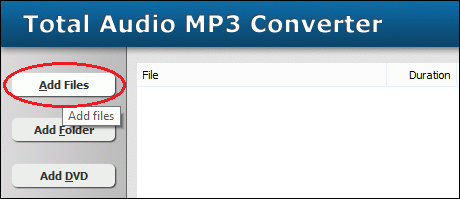 Click "Add Files" to choose H261 files and add them to conversion list. 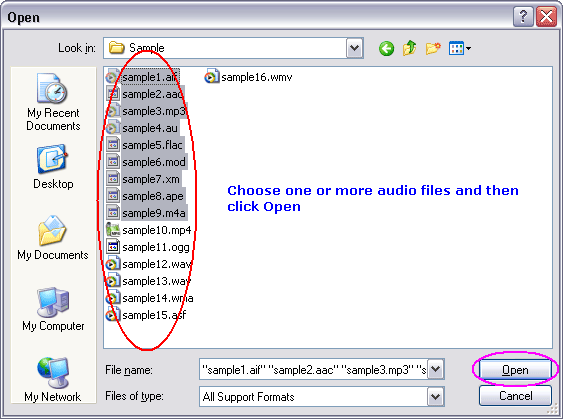 Choose one or more H261 file(s) you want to convert and then click "Open". 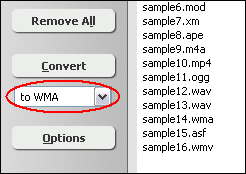 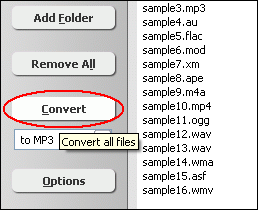 Click "Convert" to convert H261 files to WMA format. 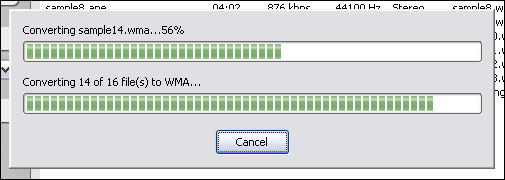 The software is converting H261 files to WMA format. 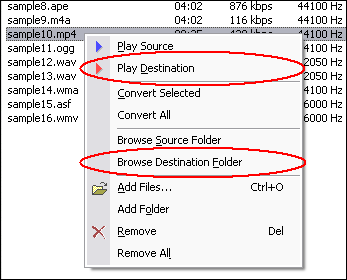 Right-click converted WMA file and choose "Play Destination" to play the WMA file, choose "Browse Destination Folder" to open Windows Explorer to browse the outputted WMA file. What is H261? The H.261 standard actually only specifies how to decode the video. Encoder designers were left free to design their own encoding algorithms, as long as their output was constrained properly to allow it to be decoded by any decoder made according to the standard. Encoders are also left free to perform any pre-processing they want to their input video, and decoders are allowed to perform any post-processing they want to their decoded video prior to display. One effective post-processing technique that became a key element of the best H.261-based systems is called deblocking filtering. This reduces the appearance of block-shaped artifacts caused by the block-based motion compensation and spatial transform parts of the design. Indeed, blocking artifacts are probably a familiar phenomenon to almost everyone who has watched digital video. Deblocking filtering has since become an integral part of the most recent standard, H.264 (although even when using H.264, additional post-processing is still allowed and can enhance visual quality if performed well). What is WMA? A WMA file is in most circumstances encapsulated, or contained, in the Advanced Systems Format (ASF) container format, featuring a single audio track in one of following codecs: WMA, WMA Pro, WMA Lossless, or WMA Voice. These codecs are technically distinct and mutually incompatible. The ASF container format specifies how metadata about the file is to be encoded, similar to the ID3 tags used by MP3 files. Metadata may include song name, track number, artist name, and also audio normalization values. H261 to WMA Related Topics: PSX to WMA, NSA to WMA, SHN to WMA, 3GPP to WMA, EVOB to WMA, SMK to WMA, 3G2 to WMA, TTA to WMA, WAVE64 to WMA, M2T to WMA, OGM to WMA, MP3 to WMA, AMV to WMA, SOL to WMA, SND to WMA, MKA to WMA, VCD to WMA, OGV to WMA, ASF to WMA, MXF to WMA, MPG to WMA, KAR to WMA, SDP to WMA, SWF to WMA, H264 to WMA, GXF to WMA, HDTV to WMA, ADX to WMA, DIVX to WMA, MMF to WMA, QT to WMA, FLIC to WMA, VOB to WMA, VQF to WMA, 3GP to WMA, MTS to WMA, NUT to WMA, M4R to WMA, RM to WMA, 4XM to WMA
|
| Home | Getting Started | Download | Buy Now! | Screen Shots | FAQ | Support | Contact | Links |
| Copyright © 2007-2014 Hoo Technologies All rights reserved. Privacy Policy |